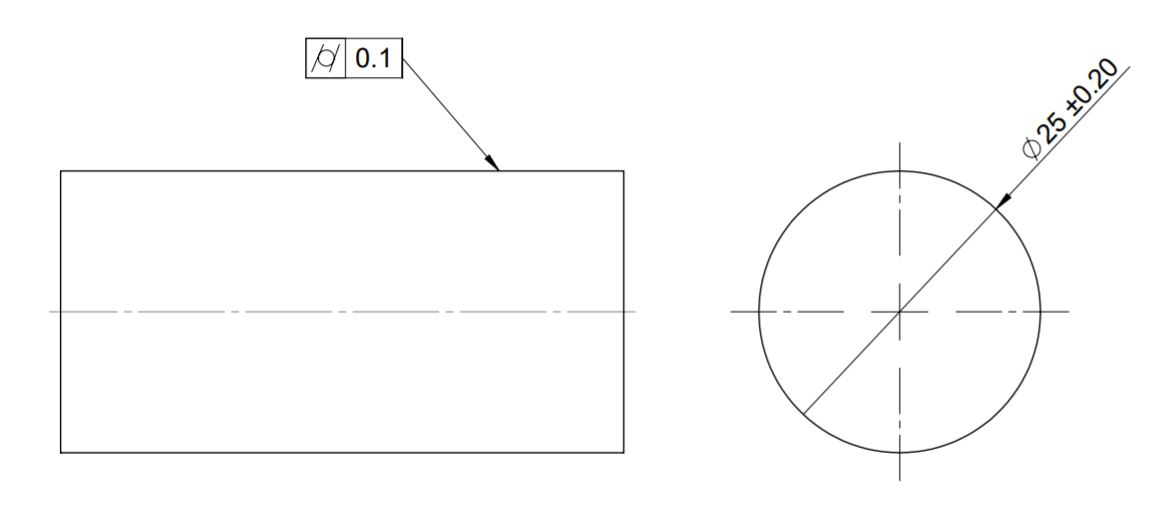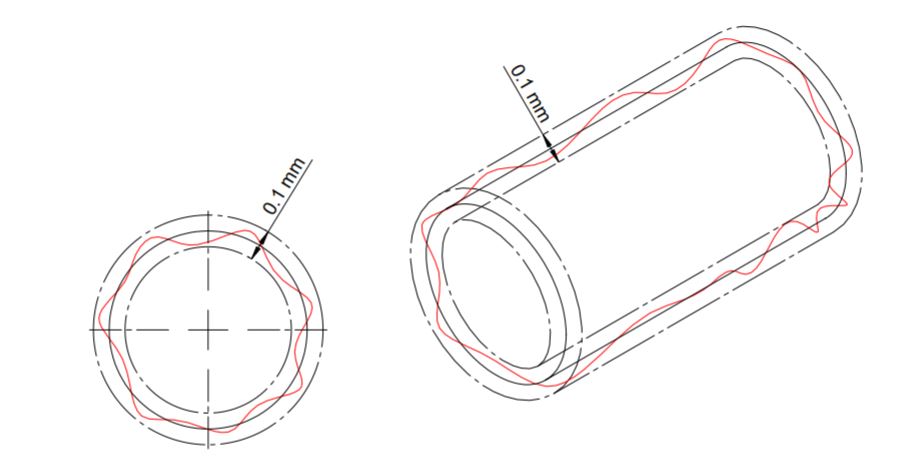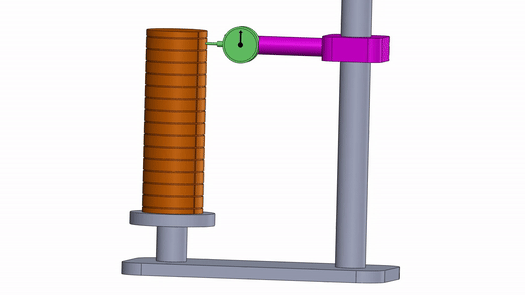What is cylindricity tolerance in GD&T?
Cylindricity tolerance in gd&t is a type of foam control tolerance that defines the allowable deviation in a feature from actual true cylinders. It controls the circularity and surface straightness of a control feature of a part. In this way, cylindricity controls a condition where all points on the surface of revolution are at that same distance from the actual central axis.
Circularity controls the required cross-sectional area only. Whereas cylindricity is the combination of circularity and surface straightness and controls the entire surface. Don’t miss this article on the basics of Geometric Dimension and Tolerance.
Cylindricity Tolerance Representation

We represent Cylindricity tolerance in gd&t as a circle with two-line without any datum feature or MMC/LMC modifier. Its value is always less than the linear tolerance of circle diameter.
For example, to control a circular feature with a diameter of 16±0.2 mm. The circularity tolerance value can not exceed ±0.2 mm. Click this link to know the symbols used in geometric and control dimensional tolerances.
Tolerance Zone

Cylindricity in gd&t creates a 3-dimensional tolerance zone with two co-axial cylinders at a distance equal to the cylindricity control tolerance.
In the above example, the radial distance between cylinders will be 0.1mm. Therefore all points of the surface to be controlled must lie within a defined 3D tolerance zone.
How to measure GD&T Cylindricity Tolerance?

We measure the cylindricity tolerance of a part along the entire controlled surface. You can use CMM and VMM machines, 3D scanners, height gauges, or dial gauges to measure cylindricity.
Follow the following steps to measure the cylindricity of a feature using a height or dial gauge.
- Constraint the part about the central axis on the turntable or any fixture.
- Move the probe along the completely controlled surface while the part rotates about its axis.
- Any deviation in the surface at the required plane measures the cylindricity of that controlled surface.
We will keep adding more information of cylindricity foam control tolerance in gd&t. Add your suggestions, comments, or questions in the comment box.

Pls explain how to measure cylindricity using CMM and VMM
machines, 3D scanners. Pls provide some animations too